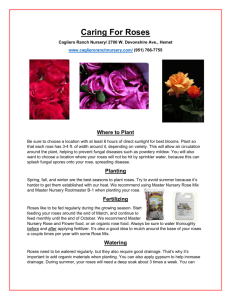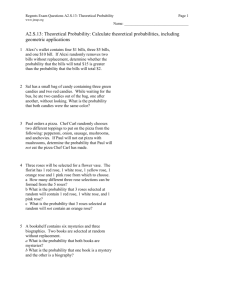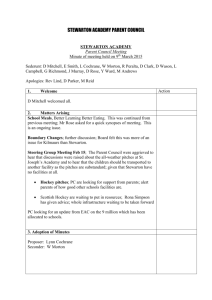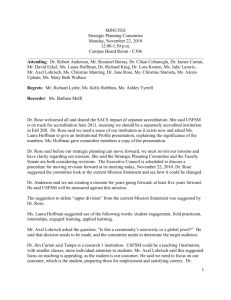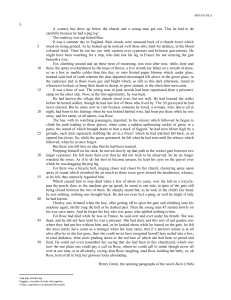earthkind roses in containers
advertisement
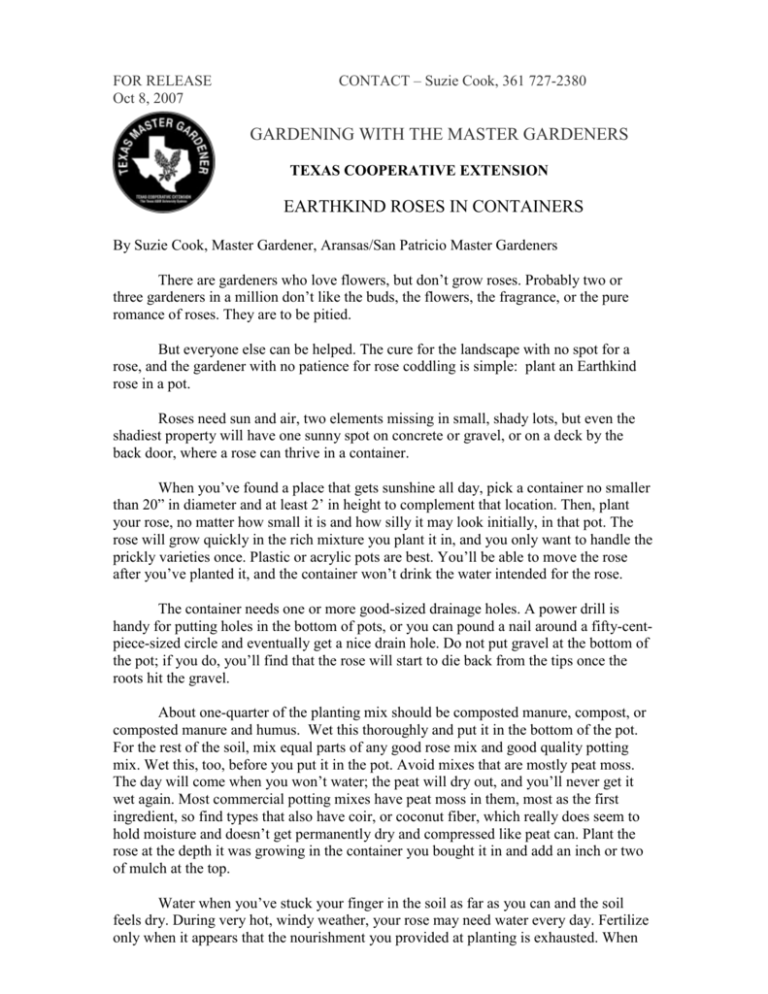
FOR RELEASE Oct 8, 2007 CONTACT – Suzie Cook, 361 727-2380 GARDENING WITH THE MASTER GARDENERS TEXAS COOPERATIVE EXTENSION EARTHKIND ROSES IN CONTAINERS By Suzie Cook, Master Gardener, Aransas/San Patricio Master Gardeners There are gardeners who love flowers, but don’t grow roses. Probably two or three gardeners in a million don’t like the buds, the flowers, the fragrance, or the pure romance of roses. They are to be pitied. But everyone else can be helped. The cure for the landscape with no spot for a rose, and the gardener with no patience for rose coddling is simple: plant an Earthkind rose in a pot. Roses need sun and air, two elements missing in small, shady lots, but even the shadiest property will have one sunny spot on concrete or gravel, or on a deck by the back door, where a rose can thrive in a container. When you’ve found a place that gets sunshine all day, pick a container no smaller than 20” in diameter and at least 2’ in height to complement that location. Then, plant your rose, no matter how small it is and how silly it may look initially, in that pot. The rose will grow quickly in the rich mixture you plant it in, and you only want to handle the prickly varieties once. Plastic or acrylic pots are best. You’ll be able to move the rose after you’ve planted it, and the container won’t drink the water intended for the rose. The container needs one or more good-sized drainage holes. A power drill is handy for putting holes in the bottom of pots, or you can pound a nail around a fifty-centpiece-sized circle and eventually get a nice drain hole. Do not put gravel at the bottom of the pot; if you do, you’ll find that the rose will start to die back from the tips once the roots hit the gravel. About one-quarter of the planting mix should be composted manure, compost, or composted manure and humus. Wet this thoroughly and put it in the bottom of the pot. For the rest of the soil, mix equal parts of any good rose mix and good quality potting mix. Wet this, too, before you put it in the pot. Avoid mixes that are mostly peat moss. The day will come when you won’t water; the peat will dry out, and you’ll never get it wet again. Most commercial potting mixes have peat moss in them, most as the first ingredient, so find types that also have coir, or coconut fiber, which really does seem to hold moisture and doesn’t get permanently dry and compressed like peat can. Plant the rose at the depth it was growing in the container you bought it in and add an inch or two of mulch at the top. Water when you’ve stuck your finger in the soil as far as you can and the soil feels dry. During very hot, windy weather, your rose may need water every day. Fertilize only when it appears that the nourishment you provided at planting is exhausted. When nights and days are hot, during the last weeks of August and first week or two of September, don’t fertilize at all. The plant, like you, is just hanging on until the weather improves. Keep it watered, and it will revive with the first little cool front and be beautiful again. Give yourself and the rose the best possible chance for success by making your rose selection from the list of roses designated as Earthkind by Texas A&M Horticulture. These roses thrive on as little care as any other landscape plant, and several on the Earthkind list are the right size and shape for growing in containers. The Fairy, for example, is a beautiful little rose, with clusters of small, double, clear pink flowers. Its structure is attractive; its leaves are small, nicely shaped and glossy; and it is seldom out of bloom. The only drawback to the Fairy is its lack of fragrance. When there is no wind and very high humidity, it may suffer a little leaf drop, but it recovers quickly and is never unattractive. Belinda’s Dream is an Earthkind rose that performs beautifully in a container. The buds are a classic rose shape in a lovely pink; the beginning blooms are very double; the maturing flower is packed full of petals like a cabbage rose. The fragrance is intoxicating. It blooms constantly and is gorgeous in bud as well as in bloom. It gets tall, 6’, but will do well for a long time in a pot. If Belinda’s Dream has any flaw it is that any injured leaves remain on the shrub longer than the guilty gardener would like. (Who let the salt spray hit it? Who didn’t water soon enough? Who didn’t move it out of the 50 mph wind? Check the mirror.) Knockout is another Earthkind rose that will grow well in a container, though some will sprawl over the sides of the pot, rather than stand as straight as you wish. The leaves are not particularly attractive; new growth of the leaves is red, which changes to a dull green, but any that are damaged seem to repair themselves overnight, or else they quickly fall off and are quickly replaced. The rosebuds are beautiful, and the petals have a translucent quality that is appealing. Fragrance is good. Knockout blooms for months and months, rewarding good treatment and bad. Carefree Beauty, the Earthkind rose formerly known as Katy Road Pink, does well in containers. This is a loose-limbed, good-sized shrub that can stand some shade and abuse (mine survived being dug up by a raccoon). The flowers are a crystal clear pink. It blooms abundantly and is untroubled by disease or insects. There are other roses that are great performers in pots, which are not yet, or may never be, on the Earthkind list. Nearly Wild is a tough little rose that thrives on street corners all over Houston. Martha Gonzales has small, dark red single flowers and very dark green foliage. This rose stays healthy and is always in bloom. Buff Beauty has creamy double flowers, blue-green foliage and tolerance for a bit of shade. Valentine looks like a florist’s rose, with double flowers of velvety, deep red, and it is nearly always in bloom. The foliage is dark green. Valentine will get black spot in the springtime, but never so much that it hurts the plant, and it recovers by itself. Its only serious flaw is a fragrance so faint that you’ll think you’re imagining it. There’s a place in your landscape and in your lifestyle for at least one rose. The sooner you admit it, and plant one, the happier you’ll be. For more information or questions about local gardening, contact an Aransas/San Patricio Master Gardener at Texas Cooperative Extension, Aransas County Office, by email at aransas-tx@tamu.edu, by phone 790-0103, or Mondays through Fridays from 8 a.m. until 5 p.m., at 611 East Mimosa, Rockport. Extension education programs serve people of all ages, regardless of socioeconomic level, race, color, sex, religion, handicap or national origin. Green Acres Demonstration Garden is located with the Aransas County Extension office. Because of generous community support and the work of volunteer Master Gardeners, the gardens are free. Visit the gardens during daylight hours, seven days a week.
